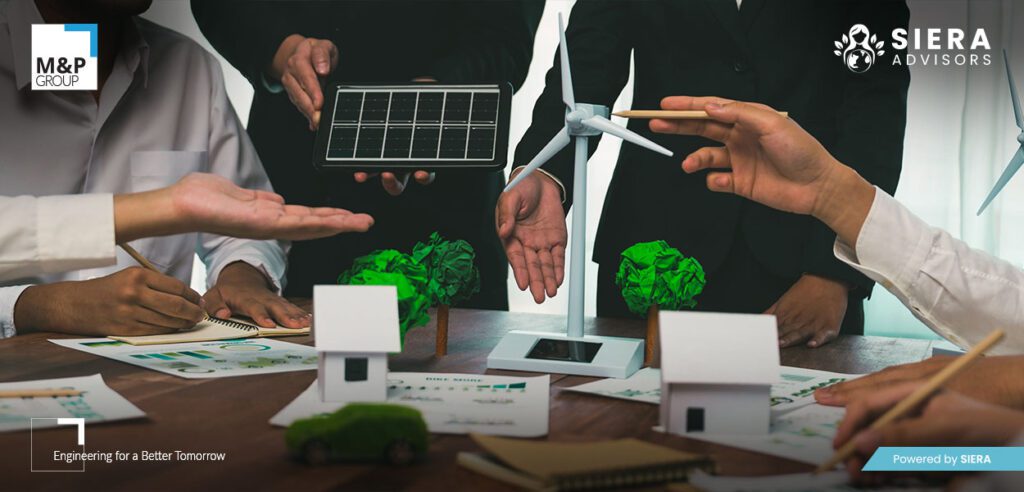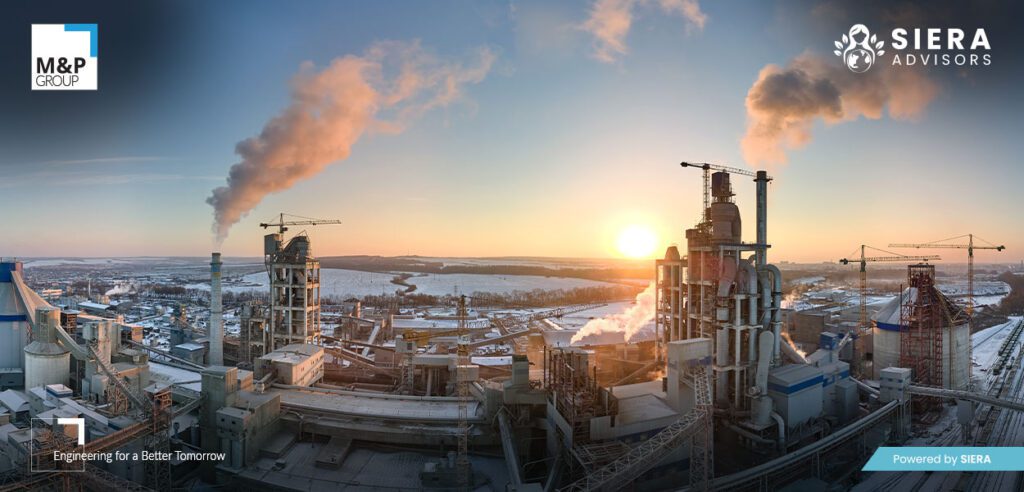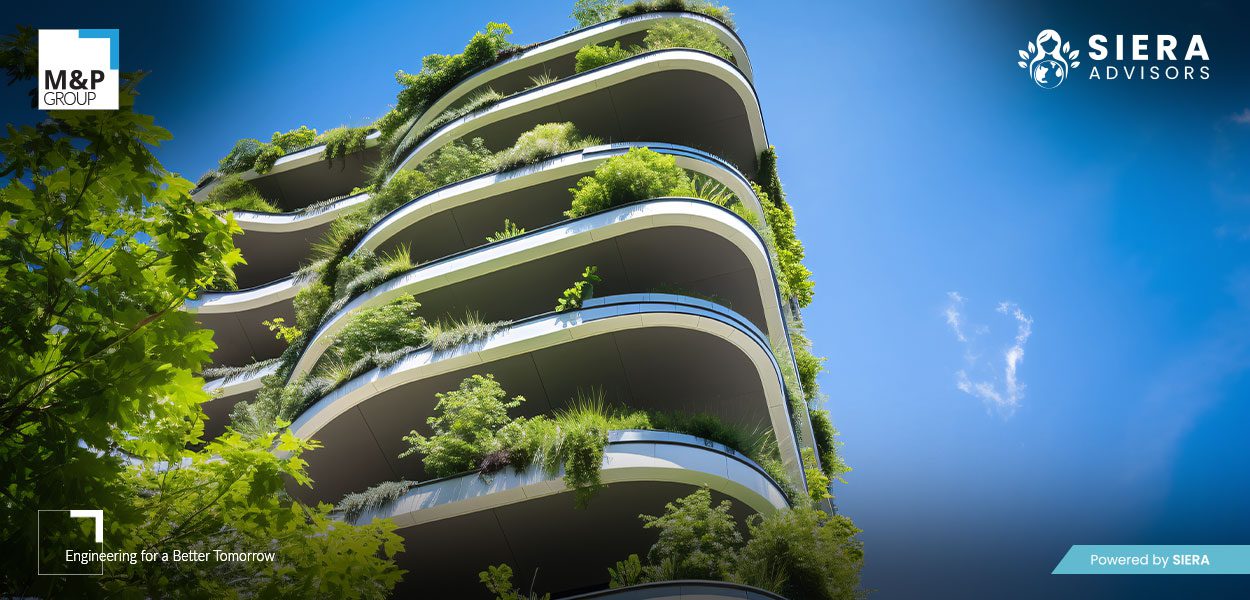The construction industry, traditionally a major contributor to resource scarcity and pollution, is one of the sectors currently undergoing a green revolution. As climate change continues to transform the world, business leaders are under increasing pressure to reduce their environmental impact.
For the construction industry, this is not just a necessity - it is a moment of change. In view of the increasing housing shortage in major cities, developers are faced with the challenge of harmonising market demand with their growing ecological responsibility.
From the EU Green Deal to CSRD, there are more ESG challenges than ever before and the industry will need to make long-term changes to remain resilient in the modern landscape. This is where sustainable construction comes in.
What is sustainable building?
Sustainable construction, also known as "green building", focuses on minimising the environmental impact of buildings over their entire life cycle.
Environmentally friendly construction is about more than just using sustainable materials. It encompasses all aspects of the construction process - from planning and site selection to construction techniques and operation after completion.
This ranges from the extraction of raw materials to the final demolition or reuse of a building. The aim of sustainable building practices is to conserve resources, lower energy consumption, reduce CO2 emissions and create a healthier living environment for users.


The ecological and economic benefits of sustainable construction
1. Reduction of the CO2 footprint
Buildings are responsible for around 40 % of global energy consumption and 30 % of global greenhouse gas emissions. A large proportion of these emissions are attributable to energy consumption during the construction phase and the operation of buildings. This is precisely where sustainable construction comes in, by focussing on energy-efficient construction methods and renewable energies.
Green buildings often feature state-of-the-art insulation, energy-efficient windows, solar panels and intelligent systems that optimise energy consumption. These innovations reduce the carbon footprint of buildings and significantly lower ongoing emissions.
2. Resource conservation
Traditional construction methods have a significant impact on natural resources. From the extraction of raw materials to the production of cement and steel, the process often leads to significant environmental damage. Sustainable construction minimises this impact by using renewable, recycled or locally sourced materials.
Materials such as recycled steel, bamboo and hempcrete are becoming increasingly popular as they are not only sustainable but also reduce the need for energy-intensive manufacturing processes. In addition, sustainable buildings prioritise the efficient use of water, for example through rainwater harvesting systems and water-saving fittings to minimise waste.
3. Energy efficiency and cost savings
A central principle of sustainable construction is the creation of energy-efficient buildings that reduce energy consumption and enable significant cost savings over their entire lifespan. Green buildings require less heating, cooling and lighting energy and are therefore less dependent on fossil fuels.
For example, buildings designed according to passive house principles can maintain a comfortable indoor climate all year round without the need for conventional heating or air conditioning systems. This energy-efficient approach results in lower operating costs and better cost efficiency for owners and tenants.
4. Better health and well-being
In addition to the ecological benefits, sustainable construction also focuses on the health and well-being of building users. Many traditional building materials release harmful chemicals that can affect air quality. Eco-friendly buildings emphasise the use of non-toxic, natural materials, which improves indoor air quality and reduces the risk of allergies, asthma and other health problems.
In addition, sustainable buildings often have features that promote well-being, such as better natural lighting, green spaces and air circulation systems. These features help to improve the mental health, productivity and quality of life of occupants.
Why the future is green
The demand for ecological change is growing and there are several important reasons why sustainable construction is the future of the industry.
1. Government regulations and standards
Governments around the world, particularly in the EU, are increasingly raising environmental standards for construction. Laws such as the Paris Agreement and national building regulations are pushing the industry towards more sustainable practices.
Many governments offer tax incentives, grants and rebates for projects that meet green building standards, making sustainable construction even more attractive to contractors and investors.
Certifications such as LEED (Leadership in Energy and Environmental Design) and BREEAM (Building Research Establishment Environmental Assessment Method) provide independent validation for green buildings, ensuring credibility and a good reputation on the market.
2. Consumer demand for sustainability
Consumers are becoming increasingly environmentally aware, which is having an impact on purchasing decisions in the property market. Both home buyers and tenants are increasingly looking for energy-efficient, sustainable buildings that are not only environmentally friendly but also economical in the long term.
Sustainable construction projects often offer a higher market value due to their energy-saving potential and healthier living environment. As awareness of climate change increases, the demand for green homes and offices will also continue to rise.
3. Technological advances
The construction industry is benefiting from technological advances that make sustainable construction more practical and cost-effective. Innovations in 3D printing, smart buildings and advanced materials facilitate the creation of energy-efficient, environmentally friendly structures.
Technologies such as solar cells and geothermal energy systems are becoming increasingly affordable, meaning that larger projects can now also benefit from renewable energy sources.


Conclusion: Green building is the future
The benefits of sustainable building go far beyond environmental responsibility. From cost savings to improved health outcomes to regulatory compliance, green buildings offer tangible benefits to both their owners and their occupants.
With stricter government regulations, technological advances and changing consumer preferences, sustainable construction is becoming the industry standard. For this reason, ICP, together with SIERA Academy, is hosting the seminar "Building in existing buildings" in Schwetzingen.
A panel of experts will discuss the radical sustainable construction method of building in existing buildings and present a viable alternative to traditional, energy-intensive renovation methods.
We are convinced that sustainability is no longer just an option - it is a necessity. By encouraging dialogue about sustainable construction, we want to help companies create a more resilient and healthier future for the construction industry and the world.

